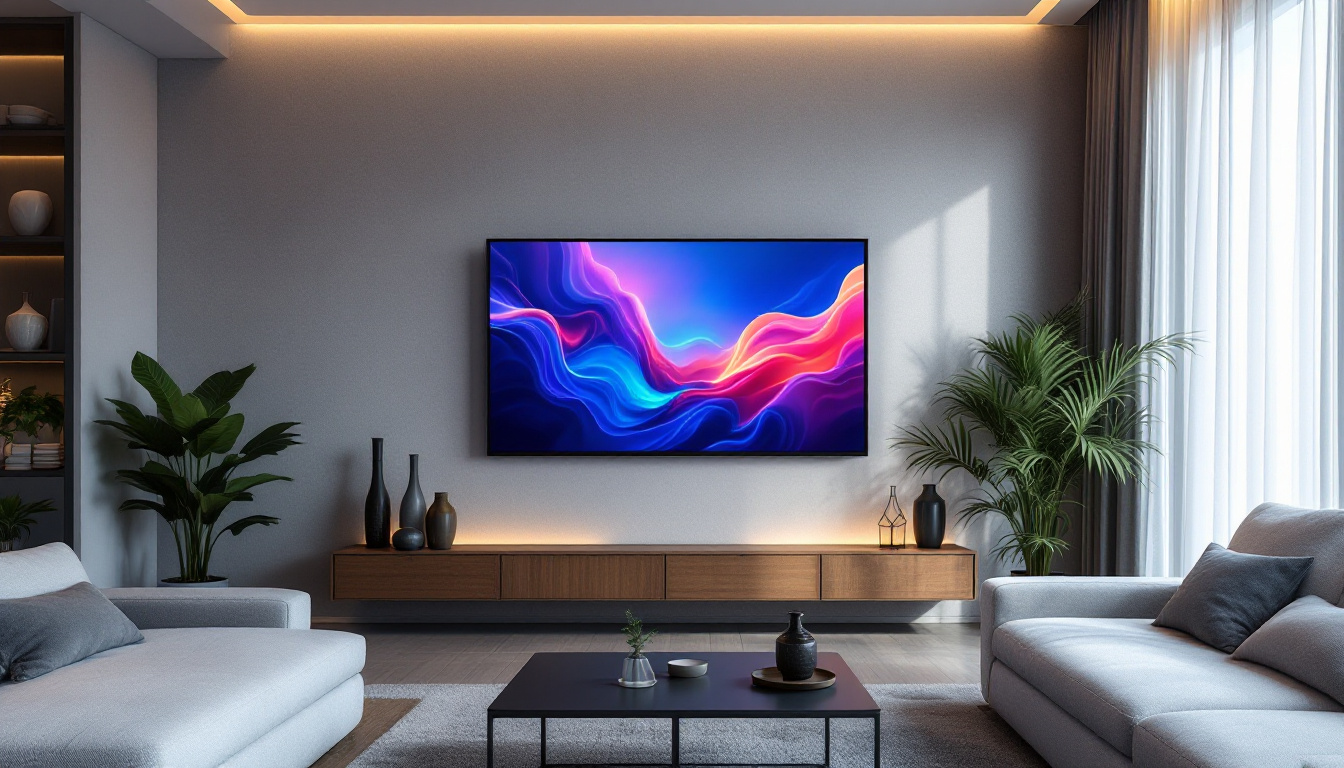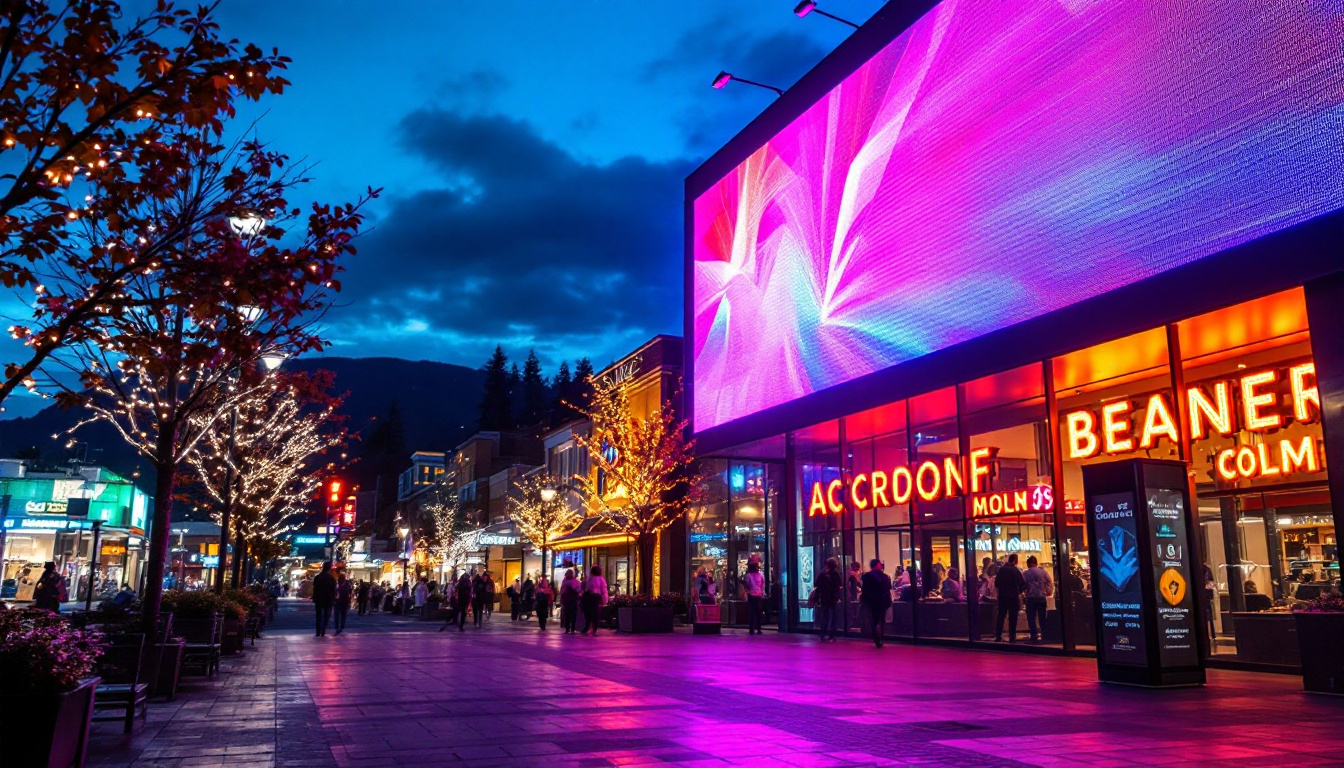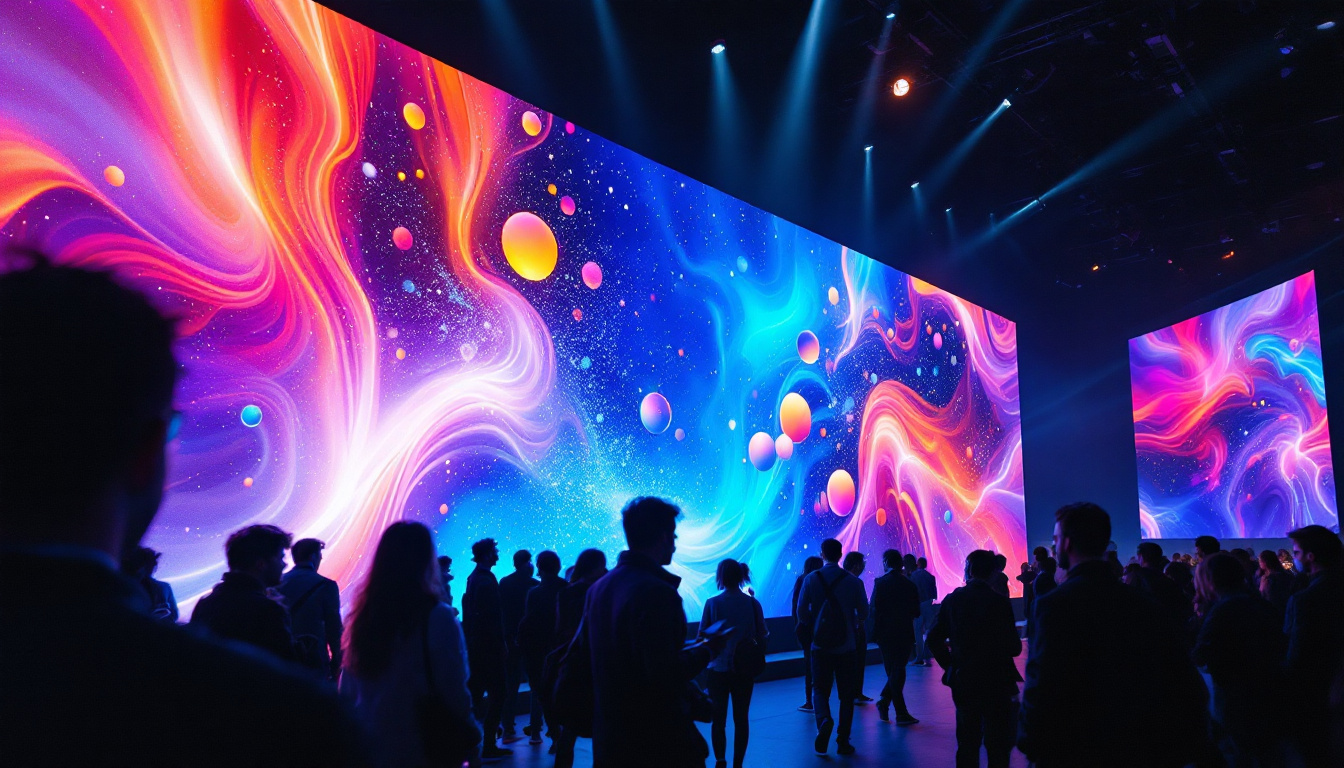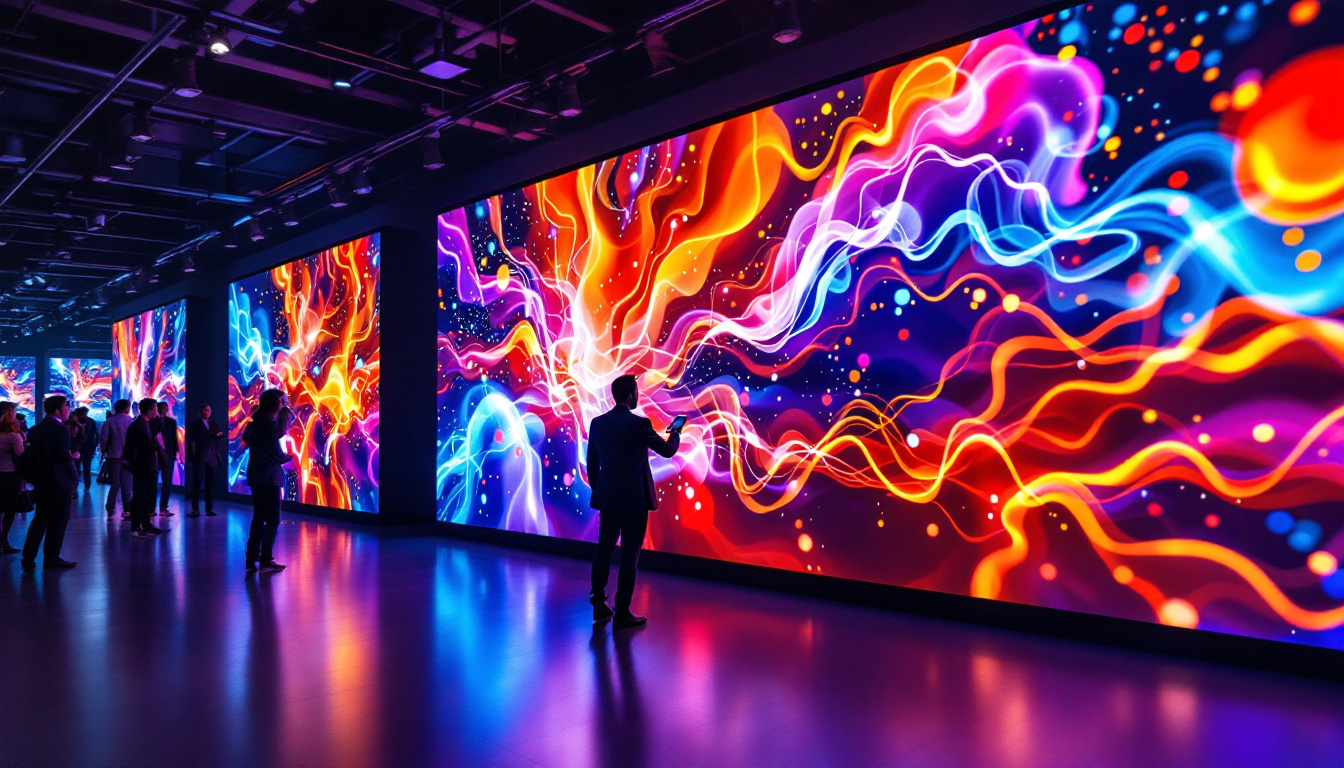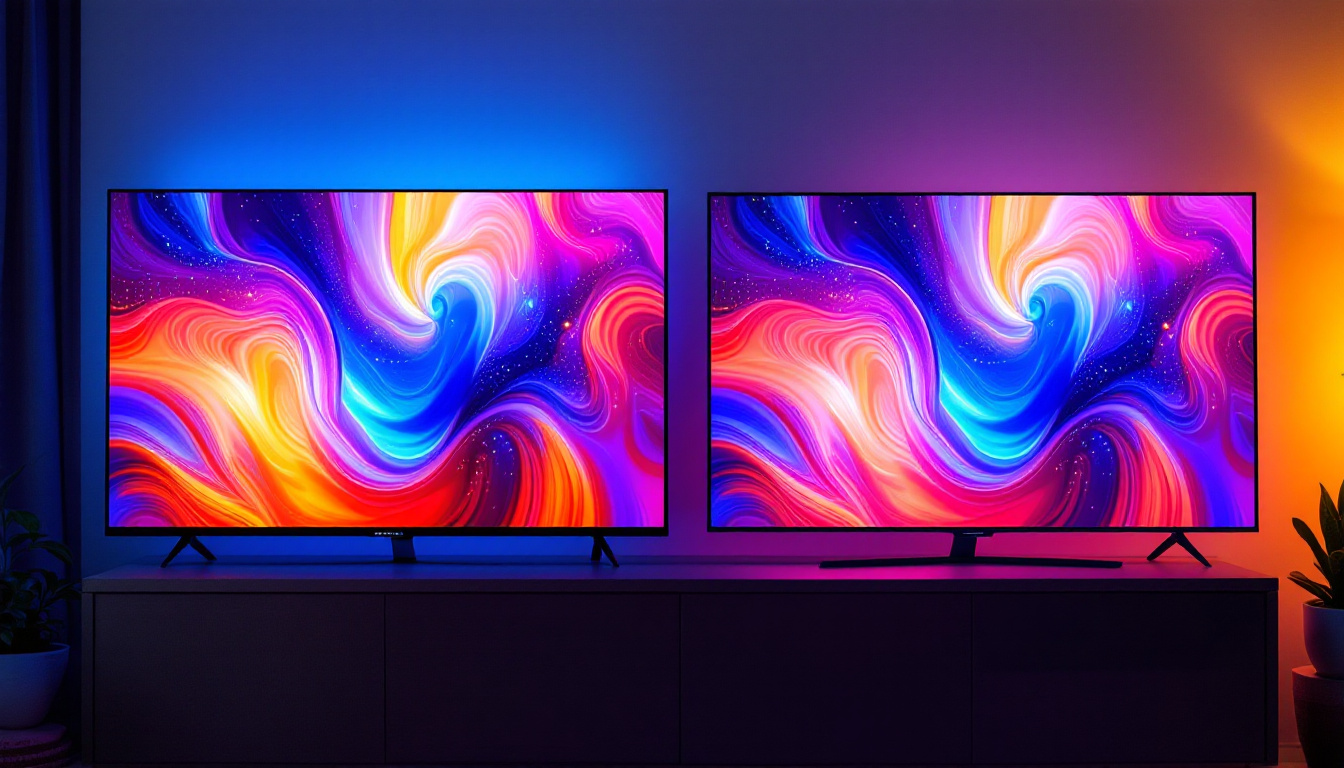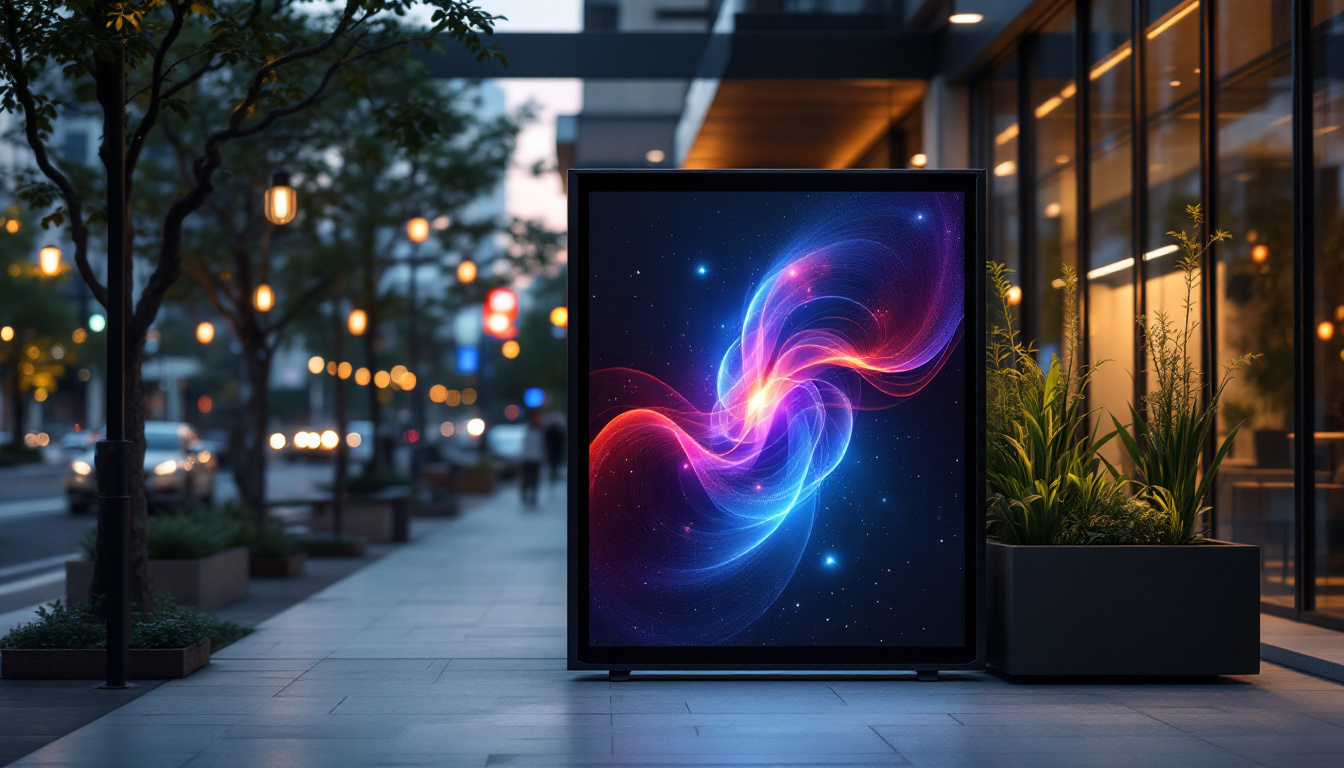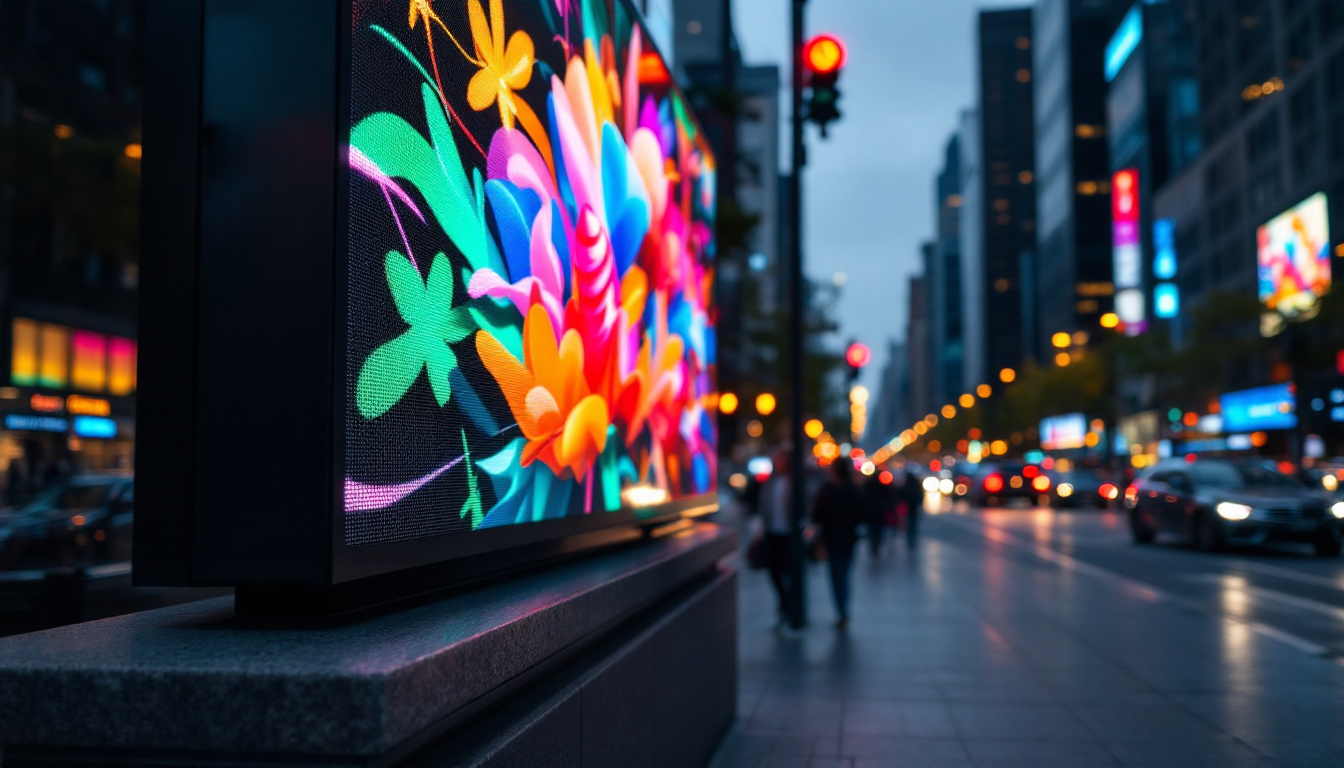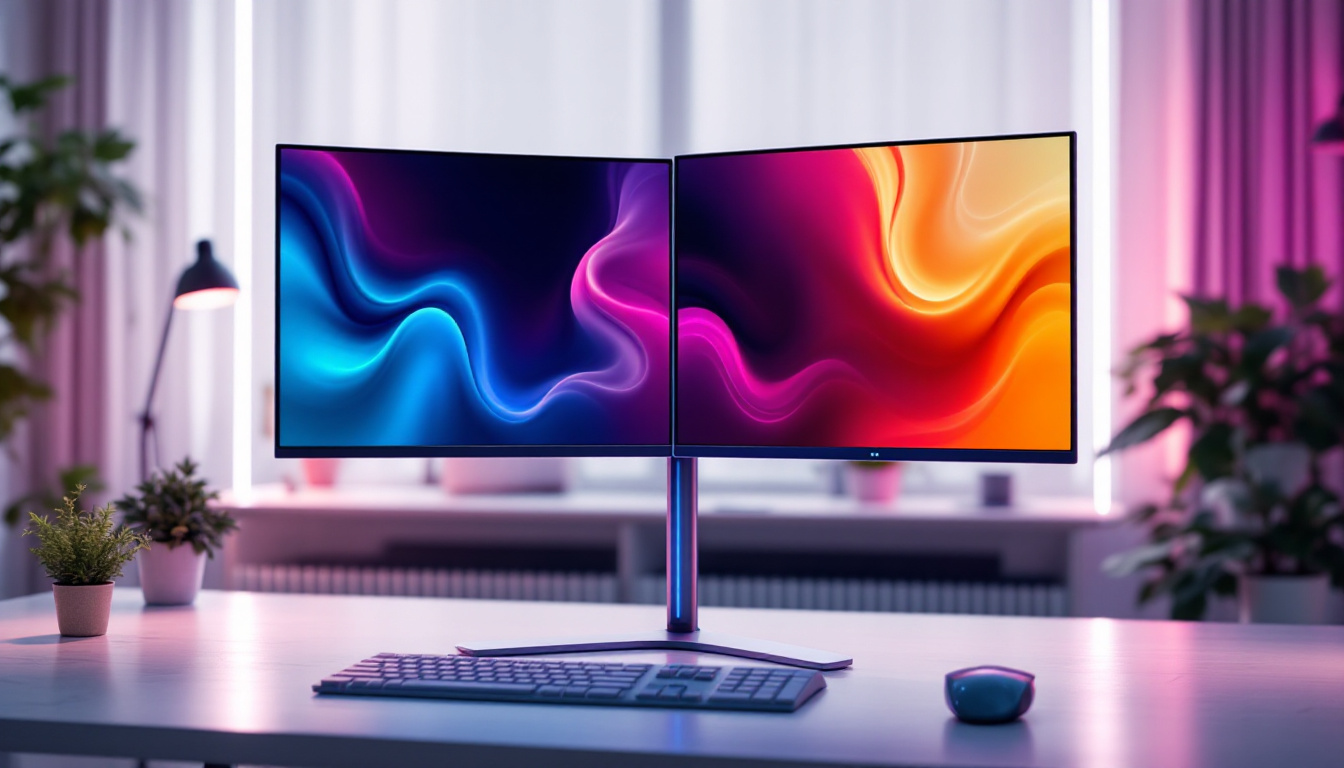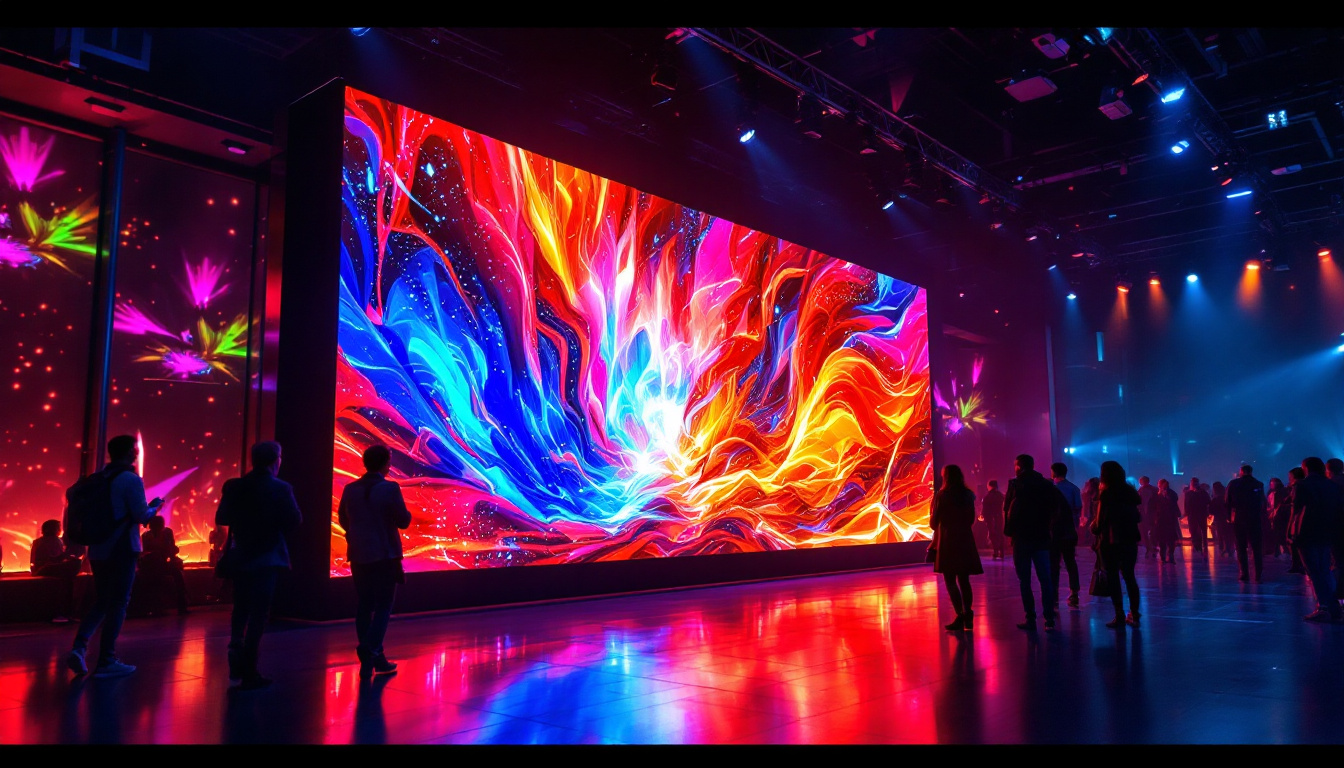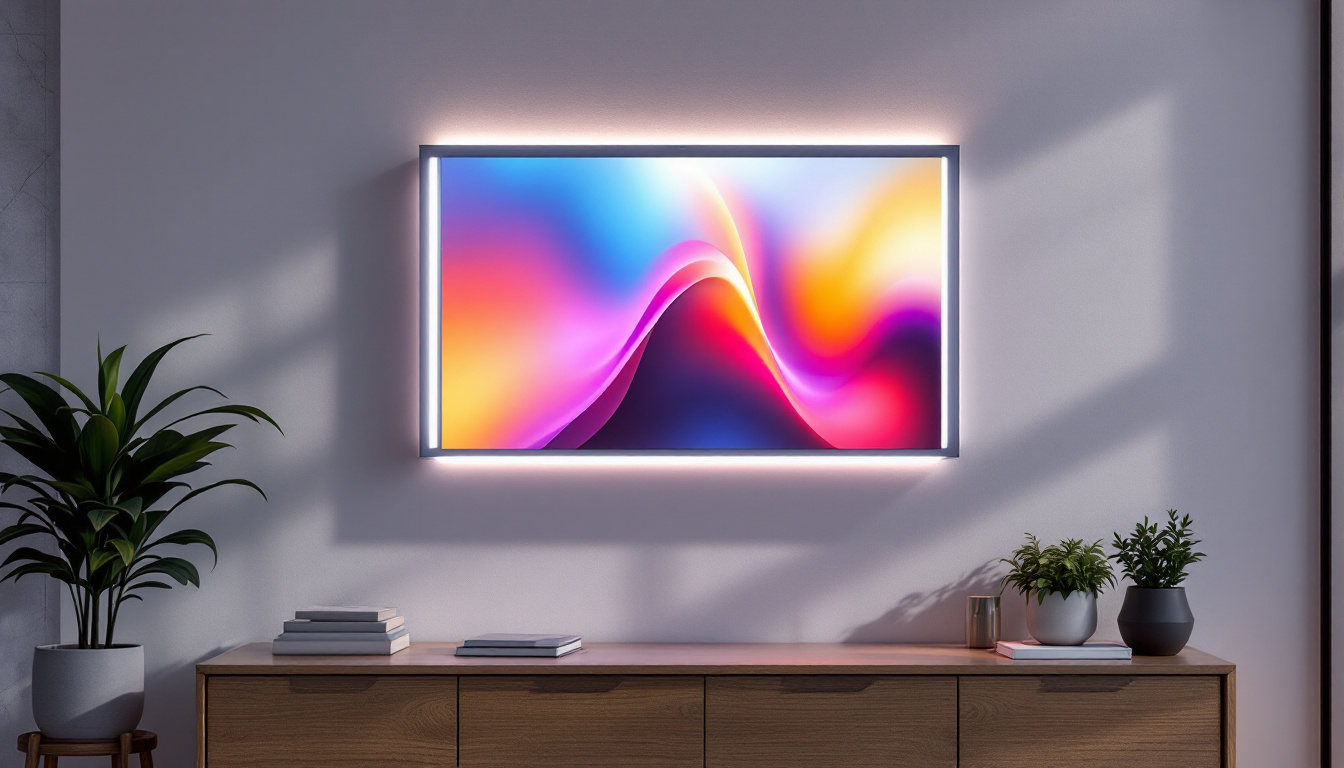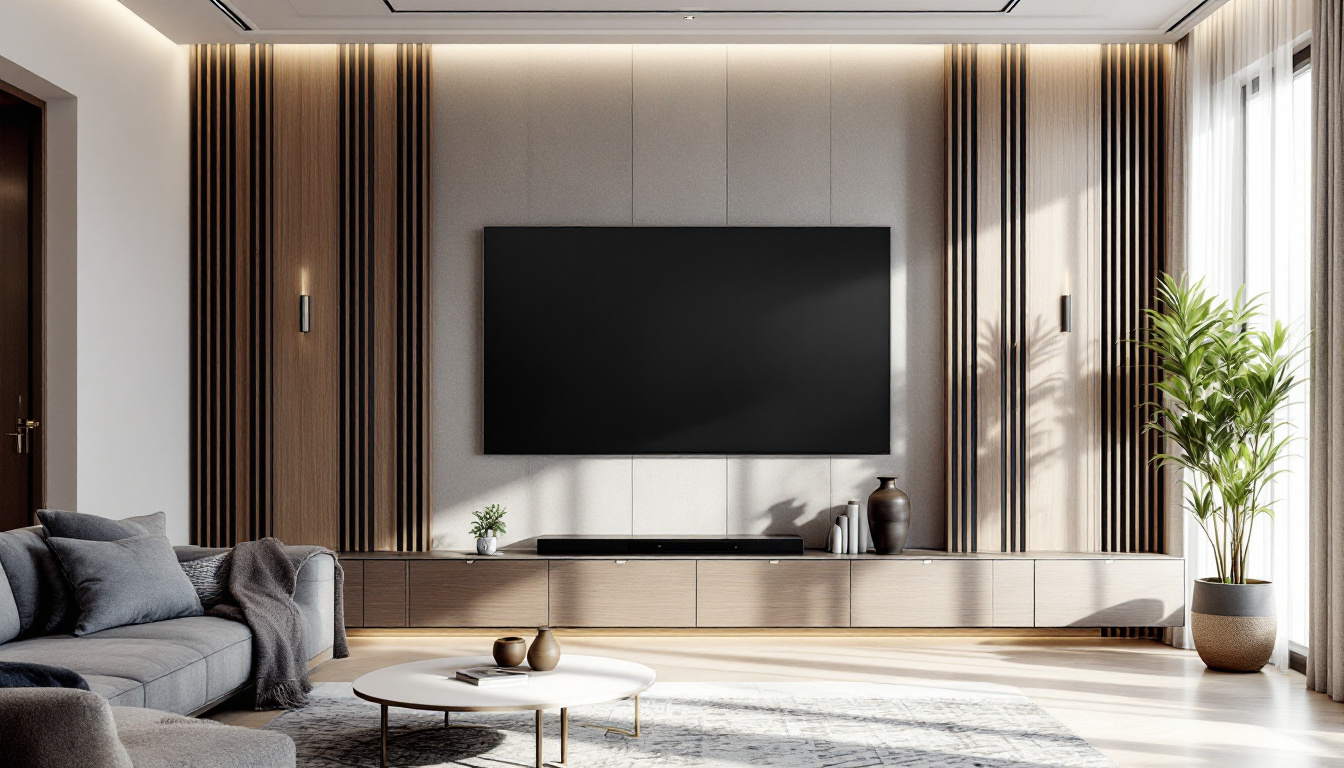In the ever-evolving world of technology, the display is one of the most critical components of any device. It serves as the interface between the user and the machine, making it essential for both functionality and user experience. Among the various types of displays available today, LED (Light Emitting Diode) displays have gained significant popularity due to their superior performance and efficiency. This article delves into the intricacies of LED displays, exploring their technology, advantages, and applications.
Understanding LED Technology
LED technology is a method of illumination that utilizes semiconductor materials to emit light when an electric current passes through them. This technology is not only energy-efficient but also compact, making it ideal for various applications, including monitors, televisions, and smartphones. The rise of LED technology has revolutionized the way we think about lighting, as it offers a longer lifespan compared to traditional incandescent bulbs, significantly reducing the need for frequent replacements and minimizing waste.
Moreover, LED lights are known for their low heat emission, which enhances safety and reduces cooling costs in environments where lighting is essential. This has made LEDs a popular choice not only in residential settings but also in commercial applications, such as office buildings and retail spaces, where energy efficiency is a priority.
How LED Displays Work
At the core of LED displays are tiny diodes that emit light. These diodes are arranged in a matrix to form pixels, which are the building blocks of the display. When an electric current flows through these diodes, they emit light in different colors, which combine to produce the full spectrum of colors visible on the screen. The precision in how these diodes are controlled allows for remarkable clarity and detail, making LED displays particularly popular for high-definition content.
There are two primary types of LED displays: Direct LED and Edge-Lit LED. Direct LED displays have the diodes placed directly behind the screen, providing uniform brightness and better color accuracy. This configuration is especially beneficial for applications requiring consistent image quality, such as professional video editing or graphic design. In contrast, Edge-Lit LED displays have the diodes positioned along the edges of the screen, which can lead to thinner designs but may sacrifice some uniformity in brightness. While Edge-Lit displays are often more aesthetically pleasing and lightweight, they may not perform as well in environments with varying lighting conditions.
Types of LED Displays
LED displays can be categorized into several types based on their technology and application. The most common types include:
- LCD with LED Backlighting: These displays use liquid crystal displays (LCD) technology with LED backlighting to enhance brightness and color accuracy. This combination allows for thinner screens while still delivering vibrant images, making them a staple in modern televisions and computer monitors.
- OLED (Organic LED): OLED displays use organic compounds that emit light, allowing for deeper blacks and more vibrant colors, as each pixel can be turned on or off independently. This technology has gained popularity in smartphones and high-end televisions, providing viewers with an immersive experience that traditional displays struggle to match.
- Mini LED: This newer technology utilizes thousands of tiny LEDs for backlighting, improving contrast and color performance. Mini LED displays bridge the gap between traditional LED and OLED technology, offering enhanced brightness and color depth while maintaining a more affordable price point compared to OLED.
In addition to these common types, there are also specialized LED displays designed for specific applications, such as transparent displays for retail environments or flexible LED screens that can be shaped to fit unique spaces. These innovations continue to push the boundaries of what is possible with LED technology, making it an exciting field to watch as it evolves.
Advantages of LED Displays
LED displays offer numerous advantages over traditional display technologies, making them a preferred choice for consumers and professionals alike. Understanding these benefits can help in making informed decisions when selecting a display for various applications.
Energy Efficiency
One of the most significant advantages of LED displays is their energy efficiency. Compared to traditional LCD or CRT displays, LED displays consume less power, which translates to lower electricity bills and a reduced carbon footprint. This efficiency is particularly beneficial in commercial settings where multiple displays are used. In fact, businesses can save a substantial amount on energy costs over time, allowing them to allocate resources to other important areas. Furthermore, the lower heat output of LED displays means that cooling systems can operate more efficiently, further contributing to energy savings.
Improved Brightness and Contrast
LED displays are known for their ability to produce brighter images with higher contrast ratios. This is largely due to the capability of LEDs to emit light more effectively than other technologies. As a result, LED displays can perform well in various lighting conditions, making them suitable for both indoor and outdoor use. The enhanced brightness not only improves visibility but also ensures that colors appear more vibrant and lifelike. This feature is particularly advantageous in settings such as retail environments, where eye-catching displays can significantly influence consumer behavior and drive sales.
Longevity and Durability
LED displays are designed to last longer than traditional displays. The average lifespan of an LED display can exceed 50,000 hours, significantly reducing the need for frequent replacements. Additionally, LED technology is more robust, making these displays less susceptible to damage from impacts or environmental factors. This durability is especially important in outdoor applications, where displays are exposed to harsh weather conditions. Moreover, the low maintenance requirements of LED displays not only save time and money but also contribute to a more sustainable approach by reducing electronic waste. With advancements in technology, newer LED displays are also being designed to withstand extreme temperatures and humidity, further enhancing their versatility and reliability.
Applications of LED Displays
The versatility of LED displays allows them to be used in a wide range of applications. From consumer electronics to large-scale advertising, LED technology has transformed the way information is presented visually.
Consumer Electronics
In the realm of consumer electronics, LED displays are prevalent in televisions, computer monitors, and smartphones. Their ability to deliver high-quality images and videos has made them the standard choice for these devices. As technology advances, manufacturers continue to innovate, incorporating features like 4K resolution and HDR (High Dynamic Range) into LED displays.
Advertising and Signage
LED displays have revolutionized advertising and signage. digital billboards and screens are now commonplace in urban environments, providing dynamic content that can be updated in real-time. This flexibility allows businesses to engage with customers more effectively, showcasing promotions, events, and brand messages in eye-catching ways.
Medical and Industrial Applications
In medical settings, LED displays are used in diagnostic equipment and monitors, providing clear and accurate visuals for healthcare professionals. Similarly, in industrial environments, LED displays are utilized for monitoring systems, control panels, and safety signage, ensuring that critical information is easily visible and accessible.
Challenges and Considerations
While LED displays offer numerous advantages, there are also challenges and considerations to keep in mind when selecting and using this technology. Understanding these factors can help users make informed decisions and optimize their display experience.
Cost Considerations
One of the primary challenges associated with LED displays is their initial cost. Although prices have decreased over the years, high-quality LED displays can still be more expensive than traditional display technologies. However, the long-term savings in energy costs and longevity can offset this initial investment.
Viewing Angles
Another consideration is the viewing angle. While many LED displays offer good color reproduction and brightness, some models may suffer from color distortion or reduced brightness when viewed from extreme angles. It is essential to evaluate the intended use and viewing conditions when selecting an LED display to ensure optimal performance.
The Future of LED Displays
As technology continues to advance, the future of LED displays looks promising. Innovations in materials and manufacturing processes are paving the way for even more efficient and versatile displays.
Emerging Technologies
New technologies, such as MicroLED and Quantum Dot displays, are emerging as potential successors to traditional LED displays. MicroLED technology promises to deliver even better color accuracy and brightness, while Quantum Dot displays enhance color reproduction by using nanometer-sized semiconductor particles.
Integration with Smart Technology
The integration of LED displays with smart technology is another trend shaping the future. Smart displays equipped with AI capabilities can adapt to user preferences, providing personalized content and enhancing the overall user experience. This integration is expected to drive demand for LED displays in both consumer and commercial markets.
Conclusion
LED displays have become an integral part of modern technology, offering a combination of energy efficiency, durability, and high-quality visuals. As the technology continues to evolve, it is essential for consumers and businesses alike to stay informed about the latest advancements and applications of LED displays. By understanding the benefits and challenges associated with this technology, users can make informed choices that enhance their visual experience and meet their specific needs.
In summary, LED displays are not just a trend; they represent a significant advancement in display technology that is likely to shape the future of visual communication. As innovations continue to emerge, the possibilities for LED displays are virtually limitless, paving the way for a brighter and more vibrant future in technology.
Explore Cutting-Edge LED Displays with LumenMatrix
Ready to experience the future of visual communication? LumenMatrix is at the forefront of LED display innovation, offering a diverse range of solutions tailored to your unique needs. From captivating Indoor LED Wall Displays to dynamic Outdoor LED Wall Displays, and from versatile Vehicle LED Displays to engaging LED Sports Displays, LumenMatrix has the technology to bring your vision to life. Elevate your brand’s visibility and create immersive visual experiences with our state-of-the-art LED display modules. Don’t miss out on the opportunity to transform your space with our advanced LED solutions. Check out LumenMatrix LED Display Solutions today and see the difference for yourself.



